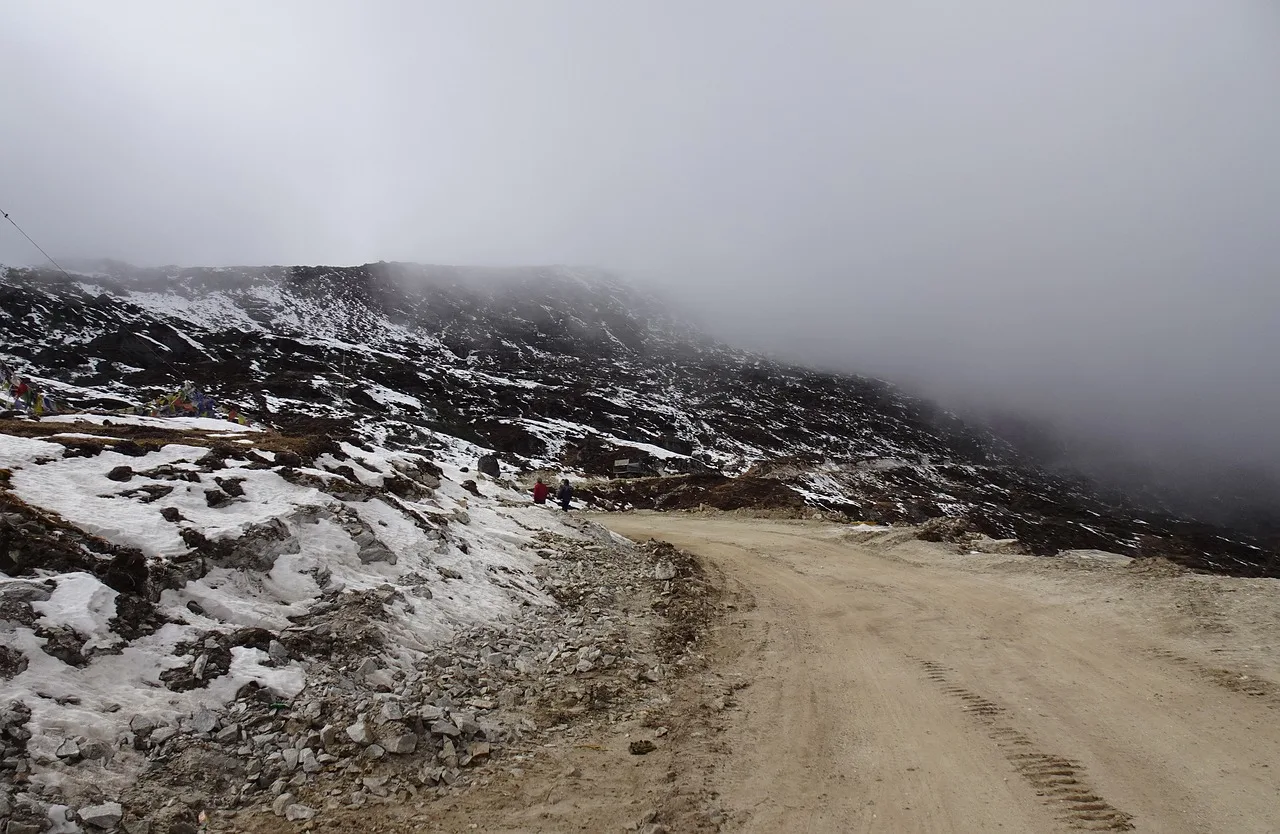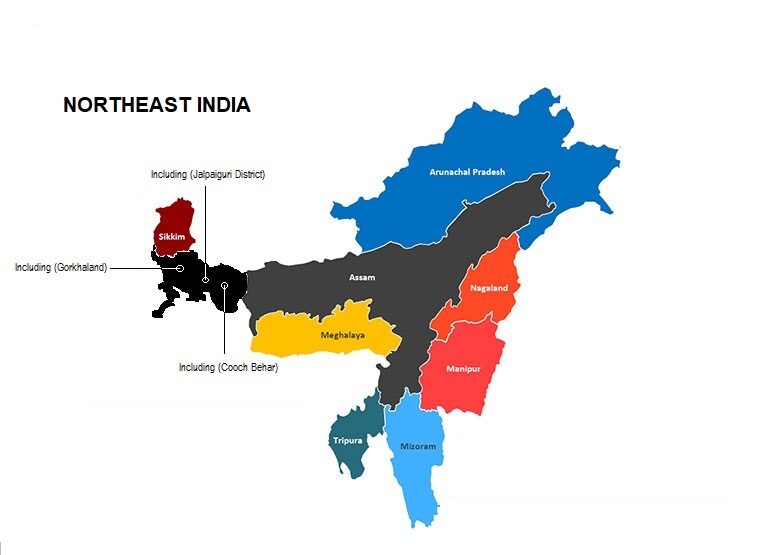
Steady and focussed infrastructure development of Northeast India is opening up the region to increased penetration of organised India, helping retailers meet the rising customer aspirations
In the last four years, more than 120 stores have been opened in the Northeast by leading retailers including Landmark Group, Tata Starbucks, McDonald’s, Forever 21 and Avantara by Trends. Out of these 100 have been opened by leading value retailers—Style Baazar, Baazar Kolkata, V-Mart, M Baazar, City Kart and Vishal Megamart. The last two months have seen around six store openings in the region by brands like Samsonite India, Chaigram, Domino’s, Balenzia, Nature’s Basket and GKB Opticals as per IndiaRetailing Insights.
Currently, northeastern cities are bustling with consumerism which was unthinkable even a decade ago.
However, just a decade or so back, things were very different and many states of the region were plagued by insurgency and related violence. “Penetration of organised retail in Northeast was a big problem due to supply chain issues,” Shreyans Surana, founder and managing director of Baazar Style Retail Ltd., which runs a value retail chain Style Baazar that has 155 outlets across 9 states in East India.
Flashback
Seventy-year-old retailer K Dasgupta remembers a time when he had to pull the shutters of his small electronics store in Dibrugarh and rush home before sunset. Come 6:00 pm, and the streets would be deserted, with people preferring the safety of their homes for the fear of insurgents. That was back in the 1980s and 1990s.
Not just Assam, the entire Northeast region—consisting of Manipur, Mizoram, Assam, Arunachal Pradesh, Meghalaya, Sikkim, Nagaland, and Tripura—was plagued by political instability and imbalanced development, affecting trade and commerce.
“The demand was always there but there was a huge lack of good road and other infrastructure which led to supply chain disruptions,” added Surana, who has stores in Assam and Tripura.
The rugged hilly terrain, landslides and earthquakes the hill-locked region is cursed with, further hampered trade.
As a cumulative effect of these factors, the region that occupies 8% of India’s geographical spread and is home to 4% of the country’s population, remained politically, commercially and culturally isolated from the rest of India for several decades.
“After 2000 and 2005, things started changing. Stability started coming in, people started to venture, a lot of infrastructure development came in,” said Vikram Bothra, Managing Director of Chandan Retail that runs Askaran Binjraj, a 50,000 sq. ft. standalone fashion lifestyle department store in Dhekiajuli, Assam. The Bothra family has been in business in the region for the last 200 years and has been an integral part of the region’s transformation.
But the major thrust came after 2014. “That was when the complete business environment, new retail brands, new retail services started coming into Northeast.”

The Big Change
“Organised retail penetration is increasing and the retail landscape is transforming, it’s developing into a bigger market. In the last two years, we have opened more than 20 stores in the Northeast,” said Surana.
Retailers operating in the region attribute this change to the focused efforts of local as well as the central government in developing the region. From 2014 to 2022, 1,350 projects worth Rs.15,867 crore have been sanctioned under the schemes of the Ministry of Development of North Eastern Region (MDONER), and North East Council (NEC) in the North-Eastern States, Union Minister of State (Ind. Charge) Science & Technology, MoS PMO, DoPT, Pensions, Atomic Energy and Space, Dr Jitendra Singh while inaugurating the ‘Purvoday’ in July last year.
From 8,480 km in 2013-2014, the total length of National Highways in the North-east region increased to 15,735 km in 2022-23, showcasing a growth of 85.55%. Since 2014-15, Rs 19,855 crore was spent on developing new tracks and doubling the existing lines of the railways in the northeast region. The number of airports and waterways increased from 9 in 2014 to 17 and 18 respectively, the minister added.
“Railways now go straight up to Itanagar, the capital of Arunachal Pradesh. States like Nagaland, Manipur, Mizoram now have good rail, air and road connectivity,” Bothra said.
Current scenario
While there has been a dramatic transformation, supply chain challenges persist, due to the terrain and climatic conditions.
“Navigating the challenging landscapes of Northeast India comes with obstacles like landslides and intense monsoon rains, particularly during peak seasons. Additionally, this region faces unpredictable weather conditions and a persistent landslide risk, setting it apart from other parts of the country,” shared Amarnath Banik who is the Amazon Trucking partner for Northeast India. As Amazon’s trucking partner, Banik oversees the delivery of Amazon packages through three established routes in Northeast India, covering 13 cities in the region, including Guwahati, Tinsukia, Shillong, and Kohima.
“We can’t fight Mother Nature—there is still rain, landslides and earthquakes, Northeast is still under seismic zone 5—but today, the buildings being made are earthquake proof. The number of incidences has decreased as the government is investing in geo-seismic infrastructure so we don’t have the kind of casualties we had 10-20 years,” Bothra explained adding that this has translated into improved sourcing and replenishment.
The internet connectivity in the region has improved too in the last six to seven years with national players like Reliance and Airtel offering lightning-fast services. Rs. 3,466 crores have been spent under 10% Gross Budgetary Support (GBS) and upgradation to 4G connectivity in 4,525 villages in the region. The region now has optical fibres.
Players like DHL, Blue Dart, Shiprocket and Delhivery have started offering services here, which has improved deliveries. Delhivery alone has reported an increase of 30% in its Northeast business in the last four to five years, a source with access to the company’s report told IndiaRetailing.
“Businesses like Amazon too have contributed to improving the logistics landscape in Northeast India,” Banik said, who was able to grow his trucking fleet from 50 trucks and 60 drivers in 2019 to 200 trucks and 250 drivers in 2024.
Banik shared that Amazon successfully addresses hurdles in the region by developing robust transportation networks, establishing alternative routes, and prioritizing local connections.
“Our reliance on strong local ties, skilled drivers, and a well-structured contingency plan has proven effective in navigating the demanding landscapes of the Northeast and ensuring timely deliveries,” Banik said.
The Amazon way
Amazon provides extensive recruitment and training to drivers as well as regular health check-ups and comprehensive accident insurance to drivers to ensure their safety.
Technology plays a crucial role in enhancing operational efficiency. “We make use of Amazon’s diverse range of technology-driven products and value-added services (VAS),” Banik explained.
“The Relay app, which includes Relay for Carrier and Relay for Drivers, offers real-time visibility into trips and performance while streamlining check-in and checkout processes. These tools facilitate immediate communication during contingencies, ensuring smooth operations and support,” he added.
Additionally, Amazon integrates GPS monitoring into its technology platform for vehicle execution and surveillance. It is integrated with every vehicle responsible for transporting goods, and offers detailed insights into various parameters, facilitating the tracking of package movement. It also helps dispatch a replacement vehicle and arrange for repairs in case of a breakdown.
With the infrastructure boost continuing and giants like Amazon contributing to the region’s development, retailers expect the supply chain scenario in the region to further improve. “In the next five years, I see a traction of good, organised retailers in NE India,” said Surana.
Did you know?
States in Northeast India are referred to as Seven Sisters and a Brother. While Manipur, Mizoram, Assam, Arunachal Pradesh, Meghalaya, Nagaland, and Tripura are the seven sisters, Sikkim is referred to as their brother.
More such insights at India’s biggest retail intelligence event–Phygital Retail Convention 2024.








